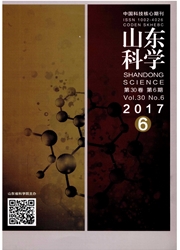

 中文摘要:
中文摘要:
To develop a Na I(Tl) detector for in situ radioactivity monitoring in the marine environment and enhance the confidence of the probability of the gamma-spectrum analysis, Monte Carlo simulations using the Monte Carlo N-Particle( MNCP) code were performed to provide the response spectra of some interested radionuclides and the background spectra originating from the natural radionuclides in seawater recorded by a Na I(Tl) detector. A newly developed 75 mm × 75 mm Na I(Tl) detector was calibrated using four reference radioactive sources 137 Cs, 60 Co, 40 K and 54 Mn in the laboratory before the field measurements in seawater. A simulation model was established for the detector immersed in seawater. The simulated spectra were all broadened with Gaussian pulses to reflect the statistical fluctuations and electrical noise in the real measurement. The simulated spectra show that the single-energy photons into the detector are mostly scattering low-energy photons and the high background in the low energy region mainly originates from the Compton effect of the high energy γ-rays of natural radionuclides in seawater. The simulated background spectrum was compared with the experimental one recorded in field measurement and they seem to be in good agreement. The simulation method and spectra can be used for the accurate analysis of the filed measurement results of low concentration radioactivity in seawater.
 英文摘要:
英文摘要:
To develop a NaI (T1) detector for in situ radioactivity monitoring in the marine environment and enhance the confidence of the probability of the gamma-spectrum analysis, Monte Carlo simulations using the Monte Carlo N-Particle ( MNCP ) code were performed to provide the response spectra of some interested radionuclides and the background spectra originating from the natural radionuclides in seawater recorded by a NaI (T1) detector. A newly developed 75 mm × 75 mm NaI (T1) detector was calibrated using four reference radioactive sources 137Cs, 60Co, 40K and 54Mn in the laboratory before the field measurements in seawater. A simulation model was established for the detector immersed in seawater. The simulated spectra were all broadened with Gaussian pulses to reflect the statistical fluctuations and electrical noise in the real measurement. The simulated spectra show that the single-energy photons into the detector are mostly scattering low-energy photons and the high background in the low energy region mainly originates from the Compton effect of the high energy y-rays of natural radionuclides in seawater. The simulated background spectrum was compared with the experimental one recorded in field measurement and they seem to be in good agreement. The simulation method and spectra can be used for the accurate analysis of the filed measurement results of low concentration radioactivity in seawater.
 同期刊论文项目
同期刊论文项目
 同项目期刊论文
同项目期刊论文
 Decomposition of Suaeda salsa and Phragmites australis in the degraded wetland of Shaohai: Species a
Decomposition of Suaeda salsa and Phragmites australis in the degraded wetland of Shaohai: Species a A novel electrochemical sensor for epinephrine based on three dimensional molecularly imprinted poly
A novel electrochemical sensor for epinephrine based on three dimensional molecularly imprinted poly Detection, occurrence and monthly variations of typical lipophilic marine toxins associated with dia
Detection, occurrence and monthly variations of typical lipophilic marine toxins associated with dia Monte carlo simulation of in situ gamma-spectra recorded by NaI (Tl) detector in the marine environm
Monte carlo simulation of in situ gamma-spectra recorded by NaI (Tl) detector in the marine environm 期刊信息
期刊信息
